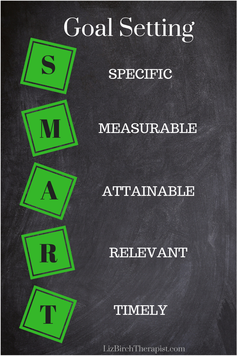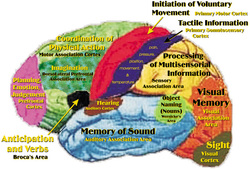 Anxiety is the number one reason people come into therapy. Are you trying to manage life with anxiety? Imagine what your life would be like if you were able to minimize your anxious thoughts? Imagine what your days will be like with more calmness. You may have thought about working with a therapist but just haven’t taken that step. When we are faced with the unknown we tend to avoid. I thought it might help if I shared with you what may happen in a therapy session with me as we work together on reducing that anxiety you’ve been living with. Follow along as if you are in session with me. Think about the questions. How would you answer them? Take notes. Go ahead and perform the coping exercise I describe. Now imagine you just walked into my calming office. Take a seat, anywhere you’d like. Let’s begin . . . I’d like to get to know a bit more about your goals and history of anxiety. What would you like to gain out of therapy and particularly this session? Anxiety feels different for everyone so therapy with me is very personalized for your specific issues. It’s also important to realize that therapy is a partnership between you and me – the therapist. I will be here to guide you, gently push you and help you realize that with your participation you can minimize your anxious thoughts. Have you ever been diagnosed with an anxiety disorder such as Social Anxiety, Obsessive-Compulsive Disorder, Panic Disorder, Post Traumatic Stress Disorder, or any specific phobia? Let’s get more specific about your goals. If you don’t have a goal in mind you won’t know when you’ve gotten there. What three goals are you looking to gain? They may be something like, decreasing your number of panic attacks, reduce your anxiety around specific relationship issues, decreasing performance anxiety at work. Share what your three goals are - the more specific, the better. Write them down. For each goal I’d like to know how your life would be different when you reach each goal. For example, “I’ll be able to perform better at work”, “It’ll be easier to socialize with others”, “I will have more days of the week with no panic attacks”. Write down how you imagine your life will be different with minimal or no anxiety. In order to continue to measure your improvement I will most likely have you complete a GAD-7 quick assessment often. It’s an easy 7 question rating scale. I’d like you to complete it at least once or twice a week. Completing this easy rating scale will help you track your improvement. I will provide you access to this assessment. Let’s put some focus on your symptoms and how they manifest for you. This is very important. Here are a few more questions. How long have you been trying to manage your anxiety? When does your anxiety affect you the most – at home, when you first wake up, at work, socially? When did your anxiety begin affecting you? What treatments have you had in the past? What treatments helped and which ones didn’t? It’s important to discuss triggers. What are your triggers that cause anxiety? For example, chronic stress, health issues, domestic violence, military duties, financial concerns, not feeling safe, etc. Write down all of your triggers. How have you been coping with your anxiety, if you have at all? For example, do you have specific ways of distracting yourself from the anxious thoughts? Behavioral coping skills might be walking away, exercising, taking a nap, focusing on slow breathing, etc. Some cognitive coping skills could be thinking positive thoughts, saying positive affirmations, brainstorming about solutions, thinking through and making a to-do list. Write down some ways you’ve been coping with your anxiety. You need actionable strategies and skills to overcome your anxiety. Having a physical awareness is important. What are your physical / emotional reactions to anxiety? Headaches, butterflies in your stomach, hands are shaking, feeling nauseous, your heart feels heavy today or an overwhelming feeling of just not feeling right. Focusing on your physical symptoms are very important. Your physical feelings work hand in hand with your thoughts. That’s the body and mind connection. We need to regulate our body first to regulate our mind. Lets focus on your body first so that you can regulate your mind. We can’t focus on one and ignore the other. I’d like you to work through this exercise so you can enhance your body and mind connection. You’ll be scanning your body with purpose so that you can regulate your body naturally. This is called a Somatic experience which focuses on the body. You can help your body calm down naturally. And remember you can’t relax your mind if you’re physically having issues such as trembling hands, headaches, pounding heartbeats. Dr. Peter Levine is the founder of Somatic Experiencing and introduced it in 1997. He introduced the exercise I’m going to describe below which will work through your physical symptoms. This exercise gently invites awareness back into the body and can create experiences of safety and calm. Go ahead and follow along below. Somatic Exercise: Get comfortable, sitting or laying down, at first you'll need to read through the instructions but eventually it's beneficial if you close your eyes. Put one hand on your forehead and one hand on your heart. Think about a mildly anxious moment and notice how you are physically feeling. How is your body responding? Just let yourself feel it. Pay attention to your hand on your forehead. Just be there and focus on your hand on your forehead. Don’t rush it. Notice any response. Now focus on your hand on your heart. Don’t do anything, just observe. Focus on any physical feelings. No need to address anything, just notice any feeling you have. Now go inside your body by focusing on any area between your hands, notice any sensations on your forehead, face, neck, shoulders, chest. Notice any physical feelings. How do those body parts feel? Do they feel tense, soft, fidgety, or comfort. Just notice it, be curious. Be with those sensations and wait for the shift. Notice how you are breathing, stay there, notice it. Now take your hand from your forehead and place it on your belly. Now focus on the sensations in your belly. Is it relaxed, tense, warm, cold, heavy, and/or tingling? No need to do anything, just notice the physical feelings and wait for the shift or change in your body. Now bring your attention to what’s going on. Notice any sensations that are going on in your entire body - your chest, back, neck, arms, fingers. Wait to notice any shift or change. Now take both hands and place them on your thighs. What sensations are you feeling? Gently press. Be observant, no need to do anything. Let your body just happen. Notice how it feels. Your body will regulate itself inside and outside. Notice how you are breathing. Count to three and slowly open your eyes and take a deep breath and bring your attention back to the room. Notice any shifts you may be feeling now. What specific parts were regulated? Give yourself 5 minutes to focus on your body. What body parts were stable and relaxed? Notice the relaxation in your body now? If there is some tension, what got in the way? Were you able to get out of your mind and focus on your body? Do you feel safe in your body and your environment now? The two key concepts in this exercise are feeling a sense of safety and a sense of present moment in your body. This beautiful mindfulness exercise only takes 5-10 minutes. It becomes easier and you will be better able to focus the more often you do it. This will create a better relationship within yourself and enable a sense of compassion and curiosity. I encourage you to practice this self-holding exercise at least two times a day in a neutral setting and neutral mood. Then describe how your mood is each time you complete this. Utilize a 10-point scale with 0 being neutral and 10 being very anxious. It’s important to check in with yourself. Practice this coping skill daily. If anxiety is something you’d like to reduce and you’re ready to begin healing, feel free to reach out to me. Schedule a free 15-minute consultation with me or go ahead and call to set up an appointment. At the moment I’m scheduling appointments about a month out, unless I get a cancellation. So don’t put this off. At the onset of this article I asked that you “Imagine what your life would be like if you were able to minimize your anxious thoughts? Imagine what your days will be like with more calmness.” I don’t want you to have to only imagine that any longer. I want you to begin living it. I’m looking forward to hearing your story. I am a licensed Marriage & Family Therapist who can provide services with anyone who resides in the State of California. I have also been trained in Clinical Hypnotherapy which is beneficial for more specific goals. Liz Birch, LMFT, CHt ~ 714-584-6047 ~ [email protected] The information provided through this website is for informational purposes only.
This information is not intended to and does not create a therapist-client relationship.
2 Comments
 What is your inner child telling you? Do you want everyone to cater to your needs? Do you find yourself disappointed a lot? Do you have a lot of fear... anxiety? The idea of having an inner child may be foreign to most people. But all of us have a part of us that's still us as a child. It's possible that our inner child never fully grew up or may not be fully healed from pain in the past. Think about your current life and all the emotions and behaviors that you don't like and are continually trying to change. These emotions and behaviors come from our experiences from when we were small children. From birth to about 6 or 7 years old, our brain functions at a relatively slow pace, which is a very "receptive" brainwave state. At this time we are profoundly affected by our life experiences. Our beliefs about ourselves and others are formed during this time based on our life's experiences. As small children we will have been absorbing a great deal from our extended families, our caregiver(s), friends, religious institutions, etc. Our experiences may have been filled with love and support or they may have been filled with neglect and abuse. Our subconscious takes in all this information and holds on to it for the rest of our lives. We cannot change the script. The life we experienced happened, whether good or bad, it happened. And that script, how our brain processes our events, is designed to keep us safe. Hence, anxiety to keep us on the lookout for danger (as an example). All of our life experiences have been "logged" into our sub-conscious minds and bodies. This all creates the pool in which we float, or sink. Inevitably, the water will be a bit dirty - or it may even be like thick mud. In this pool is our self-esteem, body-image, family trauma, shame and secrets (even if not spoken about). We sink down into this pool, or mud, whenever we are overwhelmed by our negative thoughts, emotions, self-doubt or self-loathing. In therapy the aim is to sensitively lift out this dirt/mud, bit by bit, until we are left with just a stain of what was once there. In therapy you can learn how to meet, rescue and “adopt” this wounded child who still lives deep inside you. This process of meeting, rescuing and adopting your wounded child is an amazing process. Any why you? Because you are the only person who you can guarantee never to leave you! Signs that your Inner Child may be wounded: low self-esteem, poor body-image, mood and emotional imbalances, problems with boundaries being too rigid or too weak, problems with eating, harming yourself, being a rebel/ a hoarder/ a bully/ a perennial victim or a super-achiever, intimacy problems, commitment problems, a general lack of trust in yourself and others, criminal behavior, excessive lying, just to name a few. If you are in Orange County, California and interested in working on your Inner Child please feel free to reach out to me. We can begin with a free 15-minute consultation and go from there. Or you can reach out to any therapist in your area and ask if they do Inner Child work. I wish you all the best! I am a licensed Marriage & Family Therapist who can provide services with anyone who resides in the State of California. I have also been trained in Clinical Hypnotherapy which is beneficial for more specific goals.
Liz Birch, LMFT, CHt ~ 714-584-6047 ~ [email protected]  Many of us have great intentions of reaching our goals. We may tell ourselves; "I'm going to work out more, I'm going to increase my sales this month, I'm going to work on home improvements this week, or I'm going to begin drinking less alcohol". All of those are great goals, however, it's too easy to not reach any of those goals if we phrase them as I wrote them. In order to be more successful in your goals you must get much more specific than the examples I listed above. A great system to use is the SMART goal setting system. SMART goal setting brings structure and traceability into your goals and objectives. SMART goals create clear milestones and an estimation of the goal's attainability. What does S.M.A.R.T. goal setting stand for? S = Specific
Being a therapist, I use this SMART system with many of my clients. I help them get very specific on what they want to accomplish in therapy. This may take a few sessions to figure out but it's important to clarify the goal. To have someone say, "I want to feel better about myself" is good, but it will be too difficult to know when my client will be there. So I dig a little deeper and ask my client, "What does that look like to you?" After some exploring my client may say, "Instead of crying 4 days a week, I want to work on only crying 2 days a week". That's very specific and attainable. We work on that goal and after a month or so we revisit the goal. Is the client crying less? How many days a week are they crying now?" Once they've reached crying only 2 days a week we set our next goal. How about crying only 2 times a month? Again a specific goal. This system works well when working on communication issues in relationships. A couple may argue every single day. So our measurable goal may be that they argue only 4 days a week. Of course, we don't want arguing at all, but is that realistic? Attainable? We set goals that we can be successful with. Once that goal is reached of only arguing 4 days a week we set a new goal of only arguing two days a week, and so forth. During the sessions, while working on goals, the therapist is exploring with the client what got them in their predicament. What changes need to be made and how can some of their problems be resolved. It's all a work in progress all striving for those specific, measurable, attainable, relevant, and timely goals. Why don't you think about a goal or two you'd like to reach? Then apply the SMART goal setting approach and see if that makes reaching your goals a bit more successful. I bet you'll be pleased with your results. If you are in my area and need help reaching your goals, please feel free to reach out to me and together we can work this system. It may take just a few sessions to get you set up and going. You can then check back a month or so later and we can explore how you are doing. My hope is for everyone to be successful in their goals, no matter how small or large. I am a licensed Marriage & Family Therapist who can provide services with anyone who resides in the State of California. I have also been trained in Clinical Hypnotherapy which is beneficial for more specific goals. Liz Birch, LMFT, CHt ~ 714-584-6047 ~ [email protected] https://en.wikipedia.org/wiki/SMART_criteria
 One of the most common struggles that people come in to see me for is learning the art of letting go of the past. Many are stuck thinking about the wrongs that have been done to them and they are angry, frustrated, hurt, and sad. The unfortunate part about hanging on to those feelings is they continue to hurt and harm those that we love. That could mean hurting others that weren’t involved in the past misfortunes. So let’s take a look at those past feelings. Those feelings aren’t really the past, they are the present. You are presently feeling angry, frustrated, hurt and/or sad. And it’s those feelings that are keeping the past alive. What I first like to do with clients is to fester out all that the person is feeling, such as, anger, frustration, hurt, sadness – or any other feelings that they are experiencing. Example – Client: “I am angry that my parents worked all day and I was left alone to fend for myself”. Therapist: “You are angry that you were left alone?” Client: “Yes!” Therapist: “Tell me more about that anger.” Client: “They should have been there for me!” Therapist: “Tell me what it was like to be alone.” Client: “I had no one to talk to, I was bored, at times I got scared.” Therapist: “So you were scared to?” Client: “Of course I was scared, I was just a kid!” Therapist: “Let’s talk about you feeling scared.” Client: “I was scared because what if someone tried to come into my home when I was alone?” What if I got injured and no one was there?” “Why didn’t they care enough about me to be home with me?” Therapist: “What I heard you say in the beginning was you were angry because you were left alone but I’m also hearing you were frightened and you felt your parents didn’t care about you.” Client: “Yes, I guess, I feel they must have not cared about me so they left me alone at home.” So we move from just being angry to actually carrying around a feeling that the client’s parents’ “didn’t care”. The above is just a short snippet of working through feelings and there’s more involved. It’s a process of several sessions to fester everything out. It’s like peeling an onion and working through all the layers by identifying all the feelings that were experiences. As we identify all that had happened, it’s validated. I hope this gives you an idea of how to pull out all the feelings. I don’t want anything ignored or left out. I want to hear about the experiences that are causing so much pain. But what do we do about them now? Experiences of the past need to be validated and never brushed off. Events happened and the feelings of the past are real. I spend time with clients letting them “feel” all that they have identified. That could mean they sit in sadness, anger or grief – but just for a limited time. We then move on. Now we get to the part where we let it all go! Memories are just thoughts and thoughts have no power – unless the person chooses to give it power. Some thoughts stick with us, we react to them, and we keep thinking about them. Ugh! To keep thinking about them serves no purpose. Some things you shouldn’t do: • Make yourself forget about the past (you can not forget it) • Stuff or ignore your feelings • Wait for an apology or acknowledgment (if you never get an apology you will always sit in pain) • Wait for time to heal all wounds • Change the past (you can’t change what happened but you absolutely can change your reaction to what happened) As a Cognitive Behavior Therapist I talk to my clients about how our feelings control our behavior. If you stay with anger, hurt and sadness, then they will become your reality. As an alternative, be open to moving forward. Prepare yourself to feel differently. Contemplate not defining yourself by thoughts about the past. Keep in mind, what you focus on, will become your present. Many have been telling themselves their unfortunate life circumstances so many times that they aren’t allowing positive thoughts to come in. These negative thoughts keep you distracted from moving forward. Some stuck thoughts that people hold on to: • “I want to stay stuck because I was wronged.” • “It is someone else’s responsibility to make this better for me.” • “If I let go, I’m somehow approving another person’s bad behavior.” • “I need an apology.” • “Life is unfair.” Holding on to those thoughts, the constant reminder, will only keep your unfortunate experiences in the present. How you feel is your responsibility, no one else’s. Once you realize all the power that you have, you can begin the process of letting go. Holding on to the past is like wearing a pair of shoes that are a bit too small for you. You can get your feet into them but they hurt like heck. It’s time to take them off and begin to enjoy comfort again. Remember, you are in control of how you feel. Begin by thinking more positively. But it might not be so easy at first. You have to reinforce those positive thoughts and behaviors so they will stick. As with any sort of training, the more you practice, the better you get—and, yes, you can practice being positive. Live for today. Live for and look for the positive in others. Embrace the positive aspects of your parents, spouse, children and friends. When you start feeling like the idea of being a positive person is daunting, remind yourself that all it takes is one small step in the right direction to move yourself toward a more positive attitude. Believe in yourself and remember the most important lesson of all: A positive outlook is a choice that you can always make. I am a licensed Marriage & Family Therapist who can provide services with anyone who resides in the State of California. I have also been trained in Clinical Hypnotherapy which is beneficial for more specific goals. Liz Birch, LMFT, CHt ~ 714-584-6047 ~ [email protected]  Anxiety is an emotion characterized by an unpleasant state of inner turmoil, often accompanied by nervous behavior, such as pacing back and forth, physical symptoms such as butterflies in the stomach, heart palpitations, shortness of breath, ruminating about everything you are thinking about and more. It is those unpleasant feelings of dread over anticipated events. Anxiety is not the same as fear, which is a response to a real or perceived immediate threat, Whereas anxiety is the expectation of future threat. Anxiety is a feeling of uneasiness and worry, usually generalized and unfocused as an overreaction to a situation that is only subjectively seen as menacing. It is often accompanied by muscular tension, restlessness, fatigue and problems in concentration. Anxiety can be appropriate, but when experienced regularly the individual may suffer from an anxiety disorder. What triggers anxiety? When felt appropriately, anxiety is beneficial and can keep you out of harm's way… the anxiety you may feel while hiking near a steep drop-off, for instance, will cause you to be more careful and purposeful in your movements. Or when the senses pick up a threat such as a loud noise, a scary sight, uneasiness about a future event or creepy feeling this information goes to our brain and the fight or flight response kicks in. Triggers are issues that make your anxiety worse or more prevalent. Some common triggers are:
So how do we relieve ourselves from all that anxiety? If anxiety is severe, medication can help. But first try the suggestions below and use medication only as a last resort.
Don't let anyone tell you that you have to "live with" anxiety. The above suggestions should bring you relief but if you feel your anxiety needs more attention don’t put off getting further assistance. Sure, the going can get tough, but it becomes harder the longer you wait, put things off, and give in to it. Research shows that participating in therapy can bring significant relief. Your therapist can help you learn to focus on more positive thoughts, search for triggers that you keep getting stuck on and help you move through them and help you find specific goals which you can reach for. You can feel better. Don’t hesitate to reach out for support when needed. I am a licensed Marriage & Family Therapist who can provide services with anyone who resides in the State of California. I have also been trained in Clinical Hypnotherapy which is beneficial for more specific goals. Liz Birch, LMFT, CHt ~ 714-584-6047 ~ [email protected]  I enjoy music. Music finds its way into my day when I'm working on reports, driving in the car, and at times at the end of my day when I want to slow things down a bit. I think everyone will find music sneaking into their lives. Maybe you have the car radio on, you might hear it via the television or you might be in the grocery store and hear it in the background. How does music affect your moods? Do you turn to music when you need to calm down or reduce anxiety? Do you put on faster music when you feel like partying or being more active? It's amazing how it controls how we feel. Music, to many, is a reward. A certain song may trigger a certain memory. That memory may remind us of someone important in our life or a special past event. Just today I was watching a documentary when I heard a song I hadn't heard in years and immediately an image of my mother popped into my head. She used to sing this to me when I was very young. I recall her trying to teach it to me. The connection was “immediate” and then a long flow of memories came back. So you're wondering what the song was? Here's a youtube of it. I think you'll enjoy it. http://www.youtube.com/watch?v=Dny_JDlwGFM At times we all get songs stuck in our head. We hear the same song over and over. We makes jokes about it happening. But it also can be very distracting in our lives. The music that gets stuck in our heads is generally just simple verses of a song. Research indicates that these loops of music play over and over when neural circuits get stuck. Sometimes if we just listen to a different song it will break that neural circuit from getting stuck. But sometimes it just creates another loop with a new song. I found this handy image on Bing images. See the “Memory of Sound”? That is the area of the brain that works with sound... and music. So when we listen to music our brains begin to change. When the music we are listening too brings us pleasure we begin to release dopamine. Actually the dopamine is released seconds before we experience the peak of pleasure. The brain actually knows what’s coming next. It can predict the pleasure. We like that! When you are feeling tense, anxious, angry, rushed and you want to slow down try listening to some relaxing music. Something slow and easy. You will notice how it affects you. Turn off the news, hard rock, etc or whatever you feel speeds you up. Sit comfortably or lay down. Listen to some relaxing music. Take the music in, enjoy the notes, control your breathing to a slower pace and when thoughts or words come in just gently push them out and before you know it you'll feel the tension leaving. For that moment in time you should feel some peace and relaxation. If you need some assistance in slowing down I do progressive relaxation for my clients. Sometimes we just need a session to wind down and relax. We deserve it. In the end, we can take on the next day with a renewed vitality. Youtube, Chris Pikal, Jan 10, 2009 The Lawrence Welk Show: Mairzy Doats CNN Health Elizabeth Landau, May 28, 2012 http://www.cnn.com/2012/05/26/health/mental-health/music-brain-science/ I am a licensed Marriage & Family Therapist who can provide services with anyone who resides in the State of California. I have also been trained in Clinical Hypnotherapy which is beneficial for more specific goals. Liz Birch, LMFT, CHt ~ 714-584-6047 ~ [email protected]  Home-Based Psychotherapy: a Fantastic Convenience How many times have you thought about seeking out the services of a therapist but just can’t seem to fit it in the schedule, or want to keep it more private, thus avoiding going to a “therapist’s office”. Maybe you are feeling too depressed or anxious to even think about getting in the car and making the drive. You’re home with the kids and one of them needs therapy services. You dread getting all the kids in the car for the one who needs the appointment. How would you feel if you had a therapist come to you? You think…. Really? That can happen? I enjoy being a Home Based Therapist. I feel like I connect with my clients on a very different level... on equal ground. I enjoy the process that takes place outside of the clinical office. I feel privileged entering my clients home, sitting on their sofa or at the kitchen table. I listen as they describe the change(s) they are looking for. With some clients we sit for coffee at a local coffee venue, others it may be a park bench. For teens, home based therapy works very well because we can meet on their turf. For businesses, I provide staff with some relaxation techniques or assistant with relationship issues such as conflict resolution. Benefits? Nerves seem to dissipate quicker. My clients seem to open up sooner. Less cancellations thus leading to better outcomes. Convenience for my clients. Home-based therapy has been happening for many years and while it may not be heard of very often, and it may be hard to find, it is available. The fees for home-based therapists are not that much different from traditional in office therapy. It may be slightly higher to account for the cost of the drive. Feeling anxious, depressed, or overwhelmed? Seeking out a home-based therapist may be what you need. Let me know what you think and if you've ever worked with a home based therapist. Comments are welcome. I am a licensed Marriage & Family Therapist who can provide services with anyone who resides in the State of California. I have also been trained in Clinical Hypnotherapy which is beneficial for more specific goals. Liz Birch, LMFT, CHt ~ 714-584-6047 ~ [email protected] *photo found on google image search |
|

 RSS Feed
RSS Feed